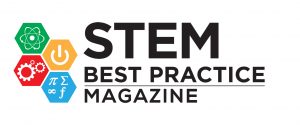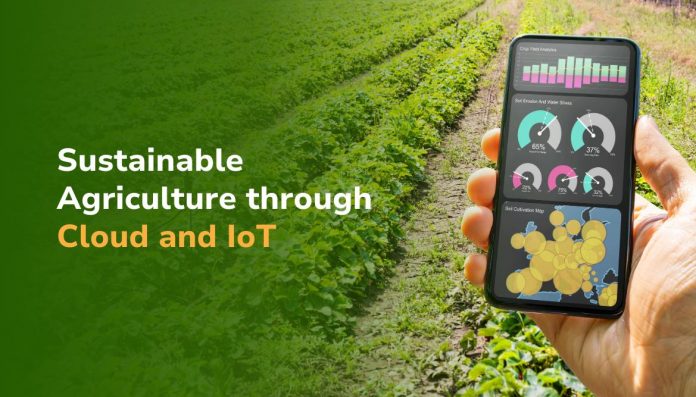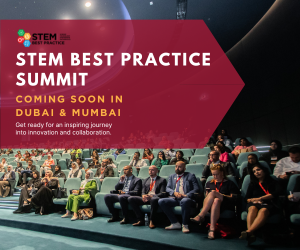Student Names: Maitha AlBawardi, Shahd Al Tawil, Shamma Al Otaiba
School Name: Al Ittihad Private School Jumeira, Grade 10
Abstract
In order to improve sustainable farming practices, this project investigates the integration of smart systems and Internet of Things (IoT) technology. The students created a smart irrigation system that optimizes water usage and continuously monitors plant health in order to address problems including water waste, ineffective crop monitoring, and unsustainable agricultural practices. The prototype gathers and processes data using sensors, microcontrollers, and cloud-based data analytics to provide farmers with useful information. This initiative exemplifies how technology may revolutionize farming methods and tackle global issues like climate change and food security. The results show notable increases in agricultural output and decreases in resource waste. The initiative demonstrates how creativity can lead to sustainable solutions by tying STEM education to real-world issues.
Introduction
The world’s population depends on agriculture, a crucial industry that faces several obstacles such as resource shortages, climate change, and rising food demand. The demands of a growing population can no longer be addressed by traditional farming systems, which are typified by inefficiencies in crop management and water utilization. Innovative approaches that use technology to improve agricultural operations are therefore desperately needed.
By creating an IoT-powered smart irrigation system, this project sought to overcome these issues. This initiative is significant because it has the potential to transform agricultural practices by implementing resource-saving and productivity-boosting precision farming techniques. The main goals were to create a system that minimizes water waste, enhances plant health, and continuously monitors soil and environmental conditions. The project aims to support the worldwide movement toward sustainability and food security by incorporating IoT into agriculture.
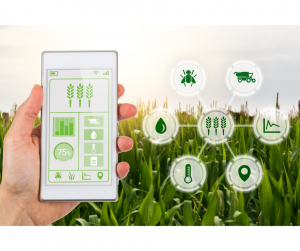
In order to investigate the relationship between environmental sustainability and STEM education, the students chose this project. They sought to create a working prototype through practical experience that would not only solve a pressing problem but also act as a template for integrating technology into practical uses. The project supports the Sustainable Development Goals (SDGs) of the UN, especially those pertaining to climate action, clean water, and responsible consumption.
Research and Background
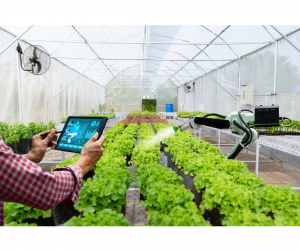 About 70% of the freshwater resources in the world are used by the agricultural sector, and excessive irrigation and poor water management techniques are to blame for large losses. These inefficiencies make water scarcity worse, which is becoming a bigger problem in dry areas and nations that are experiencing droughts brought on by climate change. According to research, conventional irrigation systems frequently lack the accuracy needed to maximize water use, resulting in resource waste and lower crop yields.
About 70% of the freshwater resources in the world are used by the agricultural sector, and excessive irrigation and poor water management techniques are to blame for large losses. These inefficiencies make water scarcity worse, which is becoming a bigger problem in dry areas and nations that are experiencing droughts brought on by climate change. According to research, conventional irrigation systems frequently lack the accuracy needed to maximize water use, resulting in resource waste and lower crop yields.
Relevant research emphasizes how IoT can be used to gather data on temperature, humidity, and soil moisture in real time. Algorithm processing of this data can enhance crop yields, lower water consumption, and direct irrigation decisions. The system’s design was also influenced by theories from environmental science and engineering, guaranteeing that it satisfied usability and sustainability standards.
Innovative answers to these problems are provided by emerging technologies, especially the Internet of Things. Farmers can gain valuable insights from real-time data collection and analysis made possible by IoT. IoT systems can direct irrigation schedules by tracking important variables like soil moisture, temperature, and humidity, guaranteeing that water is only applied when and where it is required. IoT-based precision farming has been shown in studies to improve crop output and health while reducing water use by up to 50%.
This project’s design was influenced by theories from computer science, engineering, and environmental science. The project was based on the idea of precision agriculture, which stresses the use of technology to maximize farming methods. Furthermore, the selection of materials and techniques was guided by the principles of sustainable development, guaranteeing that the system is in line with the objectives of both economic and environmental sustainability. This background study emphasized the possible effects of incorporating IoT into agriculture and offered a strong framework for creating the smart irrigation system.
Methodology
The project used a methodical approach that included stages for design, development, and testing. Every stage was meticulously designed to guarantee that the goals were fulfilled and that the system was both scalable and operational.
1- Design and Planning: The first stage was determining the project’s main goals, which were ease of use, real-time monitoring, and water conservation. To learn more about current IoT applications in agriculture and to find any gaps that the project could fill, a survey of the literature was done. The hardware and software components needed to provide the intended functionality were specified in the system architecture. To illustrate the system’s data flow and decision-making procedure, a flowchart was made.
2- Materials and Tools:
• Sensors: Soil moisture sensors to measure water content, temperature sensors to monitor environmental conditions, and humidity sensors to assess atmospheric moisture.
• Microcontroller: Arduino Uno, selected for its compatibility with various sensors and ease of programming.
• Connectivity: Wi-Fi module (ESP8266) for transmitting data to a cloud-based platform.
• Software: Python for data analysis and visualization, and a cloud-based IoT platform for real-time monitoring and data storage.
3- Development: The development phase involved integrating the sensors with the Arduino microcontroller and programming the system to collect and transmit data. The microcontroller was programmed to send sensor data to the IoT platform at regular intervals. The irrigation system was designed using a solenoid valve, which was controlled by the microcontroller based on predefined soil moisture thresholds. The system was housed in a waterproof enclosure to protect the electronics from environmental factors.
4- Testing and Validation: The system was tested in a controlled environment to validate its accuracy and reliability. Sensors were calibrated to ensure precise readings, and the responsiveness of the irrigation system was evaluated under various soil conditions. Data collected during the tests was analyzed to assess the system’s performance and to identify areas for improvement. The testing phase also included stress tests to evaluate the durability and scalability of the system.
Project Results
Deliverables: The project successfully delivered a functional prototype of a smart irrigation system. The system comprised a network of sensors for monitoring soil and environmental conditions, a cloud-based dashboard for real-time data visualization, and an automated irrigation mechanism that activated based on soil moisture levels. The prototype demonstrated the feasibility of integrating IoT technologies into small to medium-scale agricultural practices.
Visuals: Graphs illustrating soil moisture levels over time highlighted the effectiveness of the system in preventing over-irrigation. Photos of the prototype showcased its practical application, while a video demonstration provided a comprehensive overview of the system’s functionality. The visuals underscored the system’s potential to enhance resource efficiency and productivity.
Analysis: The system reduced water usage by approximately 30% compared to traditional irrigation methods during controlled testing. Real-time monitoring minimized human error, ensuring that water was delivered only when necessary. Analysis of the data revealed consistent improvements in soil conditions and plant health metrics, validating the system’s effectiveness. The findings demonstrated that IoT-based solutions could significantly contribute to sustainable agricultural practices.
Conclusion
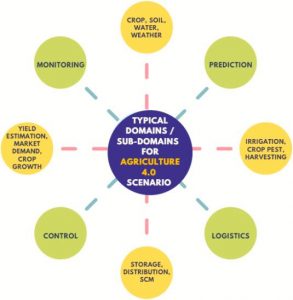 This project highlights the transformative potential of IoT technologies in addressing critical challenges in agriculture. By integrating real-time monitoring and automated decision-making, the smart irrigation system successfully reduced water wastage and improved crop health. Key findings include the effectiveness of precision farming techniques in conserving resources and the scalability of IoT solutions for broader applications.
This project highlights the transformative potential of IoT technologies in addressing critical challenges in agriculture. By integrating real-time monitoring and automated decision-making, the smart irrigation system successfully reduced water wastage and improved crop health. Key findings include the effectiveness of precision farming techniques in conserving resources and the scalability of IoT solutions for broader applications.
The project has significant implications for sustainable farming, particularly in regions facing water scarcity. The system’s design and methodology can serve as a model for future innovations, inspiring further exploration into the intersection of technology and sustainability. Potential applications include expanding the system to monitor additional parameters, such as pest activity and nutrient levels, and incorporating machine learning algorithms to predict irrigation needs based on historical data.
By aligning STEM education with real-world problems, this project demonstrates the power of innovation in creating sustainable solutions. It serves as a testament to the importance of fostering creativity and critical thinking in students, empowering them to tackle global challenges through technology and collaboration.
About the author:
 Ms. Ghofran Yazbeck is a dedicated high school math teacher and grade-level leader with over a decade of experience in education. Passionate about fostering an inclusive and engaging learning environment, Ghofran is committed to empowering students through critical thinking and problem-solving. Currently pursuing a PhD in Education at the British University in Dubai, they hold a Master of Education from the American University in Dubai and a Bachelor of Mathematics from the Lebanese International University.
Ms. Ghofran Yazbeck is a dedicated high school math teacher and grade-level leader with over a decade of experience in education. Passionate about fostering an inclusive and engaging learning environment, Ghofran is committed to empowering students through critical thinking and problem-solving. Currently pursuing a PhD in Education at the British University in Dubai, they hold a Master of Education from the American University in Dubai and a Bachelor of Mathematics from the Lebanese International University.
With a strong background in curriculum development and technology integration, Ghofran has taken on leadership roles such as STEAM Coordinator and Head of Math Club, mentoring students and collaborating with educators to drive meaningful initiatives. Fluent in English, French, and Arabic, they bring a global perspective to education, ensuring that diverse learning needs are met. Their teaching philosophy emphasizes lifelong learning, teamwork, and a growth mindset, inspiring students to reach their full potential.
About the school

Al Ittihad Private School Jumeira (IPSJ) is a leading educational institution in Dubai, committed to fostering academic excellence, cultural awareness, and personal growth among its students. Established with a vision to provide a holistic and inclusive learning environment, IPSJ combines a rigorous curriculum with innovative teaching practices to prepare students for the challenges of the future.
Rooted in Emirati values and traditions, the school embraces diversity and encourages students to develop a global perspective while staying connected to their heritage. With state-of-the-art facilities, a dedicated faculty, and a strong emphasis on STREAM (Science, Technology, Reading, Engineering, Arts, and Mathematics) education, IPSJ empowers students to excel academically, socially, and emotionally.
At IPSJ, we believe in nurturing lifelong learners who are not only equipped with knowledge and skills but also with the character and confidence to make a positive impact in the world.

